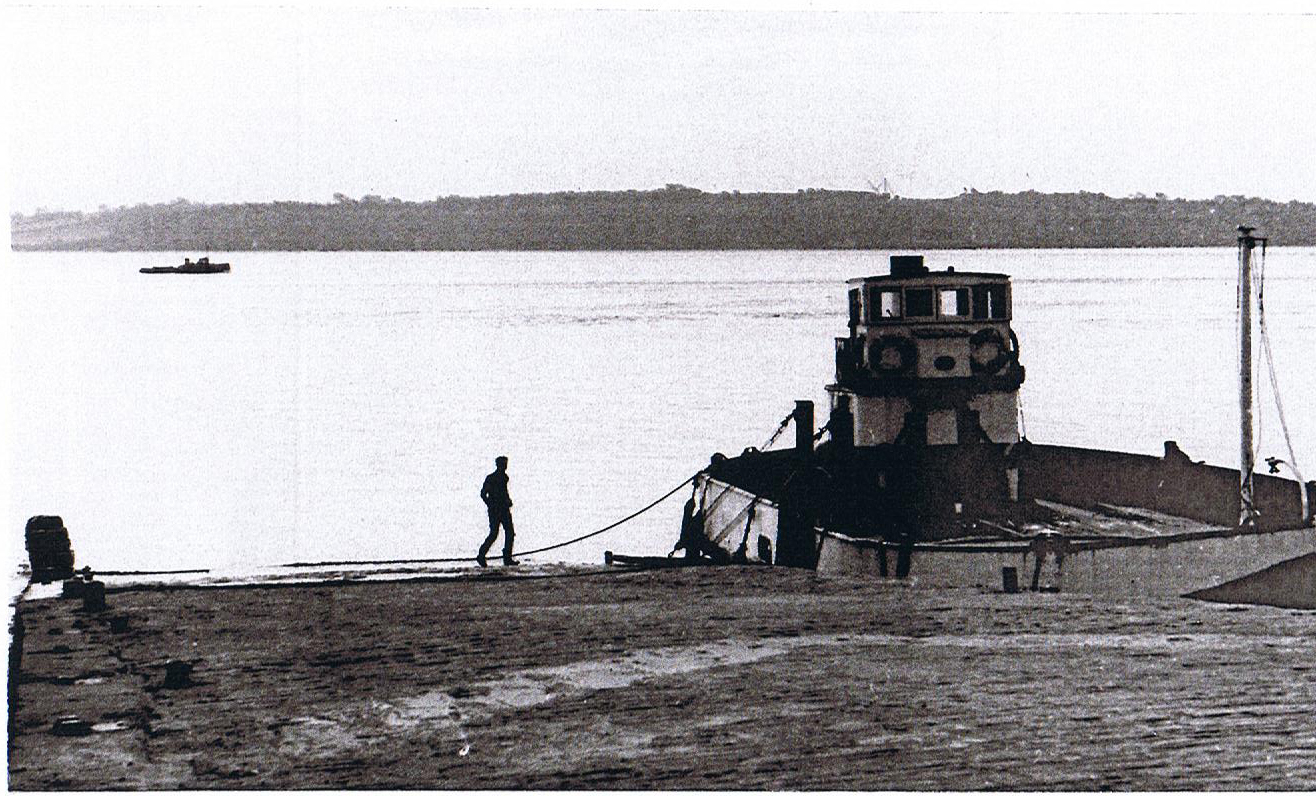The Aust Ferry was a ferry service that operated across the River Severn in Gloucestershire, England, between the villages of Aust and Beachley. Although the ferry loading points were both in England, most regarded the ferry as operating between England and Wales since the border into Wales is only a few miles from Beachley.
It was generally known as the Beachley Ferry on the Welsh side, and the Aust Ferry on the Bristol side. Before the Severn Bridge was opened in 1966, it was the only crossing of the estuary for road traffic between the West Country and South Wales below Gloucester, thus allowing cars to avoid a 60 mile road journey.
History
The passage of the Severn between Aust and Beachley was probably in use from antiquity and was long the chief route between south west England and Wales. It was perhaps the site of the Trajectus (throwing-across) where the Roman legions used to be ferried across the Severn. It was recorded in the 12th century when the de Clares, lords of Tidenham, granted quittance of the passage to the monks of Tintern. It was evidently much used in 1405 when great numbers of the English and Welsh were said to resort to the nearby chapel of St. Twrog. The manor of Tidenham retained rights over the passage, and received rents from the parishes of Aust and Beachley, until the 19th century.
The journey, a distance of over a mile at a point where the tides run swiftly, was a dangerous one, and its reputation, the roughness of the water, and the smallness of the boats deterred Daniel Defoe from making the crossing from the Aust side early in the 18th century. He referred to it as an ugly, dangerous, and very inconvenient ferry. By that time, ferry crossings from New Passage, between Redwick near Pilning and Sudbrook on the Welsh side, rivalled the Aust passage, which became known as the Old Passage.
In 1825 a new era opened with the formation of the Old Passage Ferry Association, sponsored by the Duke of Beaufort, as Lord of Tidenham. The company built stone piers on both banks, and commissioned a steamboat which began to ply in 1827, with a second one five years later, although sailing boats also continued to be used. By virtue of these improvements the company achieved the transfer of most of the cross-Severn mail routes from the rival New Passage. However, the passage remained dangerous. The Beachley-Aust ferry was lost with all hands on 1 September 1839. The same thing happened on 12 March 1844; the master, James Whitchurch was the son of the captain lost in 1839.
In 1863 the railway reached the downstream, New Passage shores on both sides of the river, and this became the standard route. The Old Passage, not connected to the railway, therefore lost much of its traffic. In 1886 the railway Severn Tunnel opened, broadly following the line of the New Passage, and this removed the demand for all ferries until the late 1920s, when the increase in motor vehicles, which were not well catered for by the railway operator, led to new demand for a crossing.
The advent of railways, in particular the opening of the South Wales railway in 1852, the Severn Railway Bridge in 1879 and then the Severn tunnel in 1886, brought a sharp decrease in traffic; both the steamboats were scrapped by 1860 and eventually the service was closed altogether.
The Car Ferry
The ferry gained a new lease of life, however, with the growth of motor traffic, and a service was re-opened in 1926. Between 1931 and 1966 a ferry service was operated by Enoch Williams of the Old Passage Severn Ferry Company Ltd. Initially this was only able to transport passengers with bicycles and motorbikes, but by 1934 the Severn Queen was launched as a car ferry. Each ferry was able to carry just 17 cars. Each car had to turn sharply off the ramp onto the ferry, then be turned on a manually operated turntable before being parked. The process was reversed for unloading. The ferry timetable was notoriously affected by the huge tidal range on the Severn. It was unable to operate at low tide and at very high tides. The last ferry crossing occurred on 8 September 1966,[6] the day before the first Severn Bridge opened.
The Martin Scorsese film No Direction Home about the life of Bob Dylan has a promotional shot of Dylan standing in front of the Aust ferry terminal in May 1966, not long before it closed for good.
The last remaining ferry boat, the Severn Princess which had been launched in 1959, was found wrecked and abandoned in Ireland in 1999 by Dr. Richard Jones, the grandson of Enoch Williams, and returned to Beachley in 2003. The vessel is being restored at Chepstow after being found in Ireland full of fertiliser, and as of 2009 is proposed to form part of a maritime exhibition.
Several older roadsigns around central Bristol (in 2007) still show directions to “Aust Ferry”, but with the word “ferry” painted out.
Discover more from LandmarkLocation.com
Subscribe to get the latest posts sent to your email.

